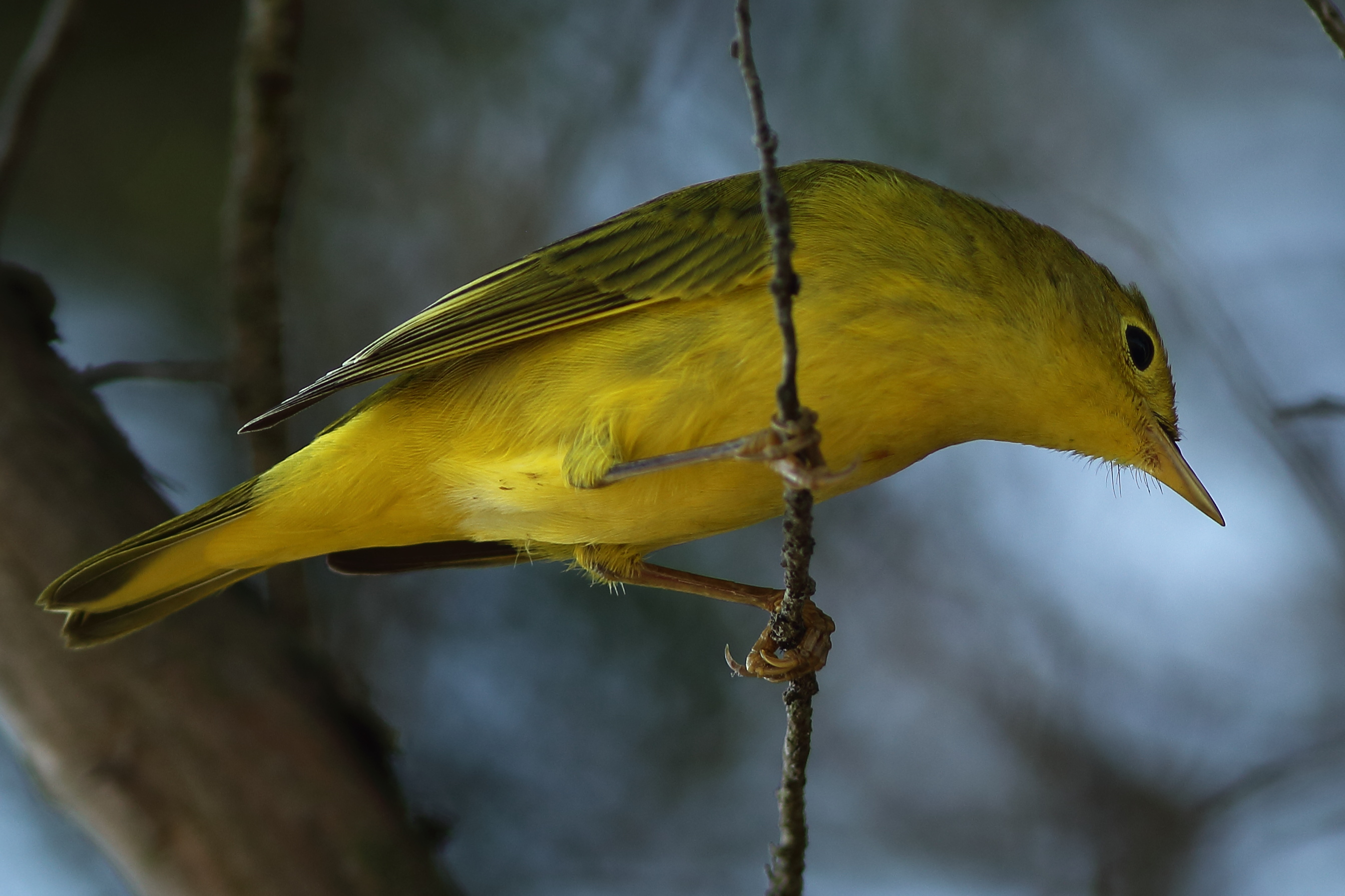
A couple of weeks ago, I spent an enjoyable weekend with some friends birding in Cape May, NJ. The winds were all wrong and the birds very sparse. At times when the winds are good, the area is spectacular. With bad winds,what we did find were a few stragglers; birds powering up for the next leg of their trip. A bird will use these bad wind days to spend time where a good food source can help them put on fat so they can negotiate the energy intense migration ahead of them. Sometimes they will move short distances along the way, but just as often, they do what is called reverse migration, heading north in the fall in an effort to find an abundant food source.
Not only birds migrate. Butterflies, dragonflies, flies, bats–almost anything with wings has species that migrate. As for butterflies, the monarch, Danaus plexippus, is the most famous. Throughout our time in Cape May we saw precious few monarch butterflies. Within that same period, as the winds were slowly turning around but still not good for migration, I visited the Edwin Forsythe National Wildlife Refuge. We found a few more migrant birds, but very few butterflies. At the end of the day, we stopped by Seven Bridges Road in Tuckerton. As we approached the trail to the end, a man walking towards us negotiated a snowstorm of monarch butterflies. There were so many, we shared a few comments with him, teasing him about being a butterfly magnet.

In this one location we saw a hundred or more monarch butterflies clinging to the few cedar trees that populated this small point. At the end of the walk, we peered out over the bay to the wide and rugged inlet the Jacque Cousteau National Estuarine Research Reserve situated between Long Beach Island’s Holgate protected area and the North Brigantine State Natural Area. We could see the expanse of rough seas where the Atlantic Ocean entered the Great Bay of New Jersey. This got me thinking. Why were the butterflies here in such large numbers and nowhere else?
I have no absolute answer, but I can do a mental experiment and attempt to intuit a reason. One can easily visualize butterflies flitting about being pushed closer and closer to the unforgiving ocean by an undesirable southwest wind. It is well known that insects like the monarch butterfly communicate through pheromones–released odors that travel for long distances. One can suspect that a few exhausted butterflies that settled down in the last protective grove of trees prior to the ocean released an attractive smell. From there, any butterfly that passed through the pheromone zone would turn to follow the scent. With each new individual, the scent grows stronger, the feedback loop grows stronger. The end result: trees covered with butterflies in one location.
I have seen this phenomena a few times in Cape May where many possible resting spots exist, yet the butterflies settle down in one location. On this day, it was in the last trees before the big blue sea. Safe travels!


What beautiful photos of the Monarchs and the yellow warbler! They are such a gift! Your tale tells the real skill needed by naturalists; perseverance and creativity! Yes, lots of outings will not yield significant tales for us because the birds have not read the books! Thanks, so much for sharing your musings and your findings!
Thanks for this. I really enjoyed it!